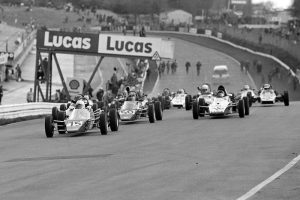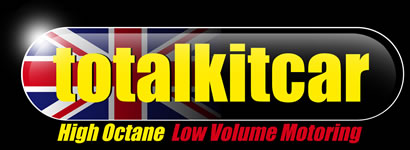Here’s a little feature on a motorsport engineering personality from the sixties called David ‘Lazo’ Lazenby.
Like many of his peers, Lazenby had built Austin Seven-based Specials pre-war before he joined the RAF.
He joined Team Lotus in 1963, initially on the Elite production line and then joined the racing team under Jim Endruweit. He was Jim Clark’s chief mechanic when he won the Indy 500 in 1965.

Later that year he transferred within Lotus again and became general manager of Lotus Components. They produced racing cars outside of F1 and all the CKD kits. Lazenby was a skilled fabricator and could get stuck in when required.
When he left Lotus he founded David Lazenby Engineering in Nazeing and among other components and sub-contract work, made Renault gearsets for when FF1600 used them. Interestingly, Lazenby’s Hawkes would use Hewland ‘boxes with VW internals.
David Lazenby Engineering then morphed into Hawke Racing Cars when a businessman called Alex Sorenson invested in the company after Lazenby had been working on his own Formula Ford 1600 design. The Hawke was so named because Lazenby saw a Hawk hovering in the garden outside his workshop after a night shift spent building his first Hawke model.
They moved first to a little workshop just off Waltham Cross High Street before moving to Hoddesdon and a collection of buildings very close to Rye House stadium.
Their first model was keenly priced and very well received when it was shown at the Racing Car Show at Olympia in January 1969. They sold 28 cars in that first year aided by the ace ex-Lotus racing car salesman and former bulldozer driver Tony Roberts who was also a very handy driver, too and did lots of development work on new Hawkes.
One of their early successes was running a young Tom Walkinshaw to the Scottish FF1600 title in 1969. Other future star drivers who cut their teeth with Hawke included Derek Warwick, Jan Lammers, James Weaver, Rick Morris and Syd Fox, who from DL9 onwards was the company’s works driver when the company was re-structured and Roger ‘Mac’ McKinstry put money in.
From 1971 they built their chassis in-house although Grand Prix Metalcraft continued fabricating the aluminium tubs.
In addition to their bread and butter Formula Ford 1600 cars, they also produced cars for other formulae such as FF2000, American Formula B (1965-68), Formula Atlantic (created in England in 1971, which mirrored Formula B rules) and F3. They marketed the Len Terry-designed Leda F5000 in America under licence in 1971.
In 1978 Rupert Keegan’s dad Mike, bought Hawke Racing Cars at which point Lazenby and Departed. Keegan senior (a qualified commercial pilot) owned British Air Ferries (from 1971 and based at Southend Airport) and from 1973 Transmeridian Air Cargo headquartered at Stansted.
Big plans for Formula One came to nothing, which is a shame because at one time Keegan was tipped to be the next James Hunt and was a very talented driver. He did though enter 37 Grands Prix taking 25 starts driving for the likes of Hesketh, Surtees, RAM and March Engineering between 1977 and 1982.
By 1979, Hawke Racing Cars was no more, however. That was also the year that all British Air Ferries equipment and routes were transferred to British Island Airways. At one time BAF had been Britain’s biggest airline.
Meanwhile, post-Hawke Lazenby set up Pace Products in Haverhill, Suffolk in 1979, who made a real name for themselves producing aftermarket performance products such as oil pumps, meaning plenty of kitcars had some of their catalogue in them!
Lazenby died in 2023 aged 86.









